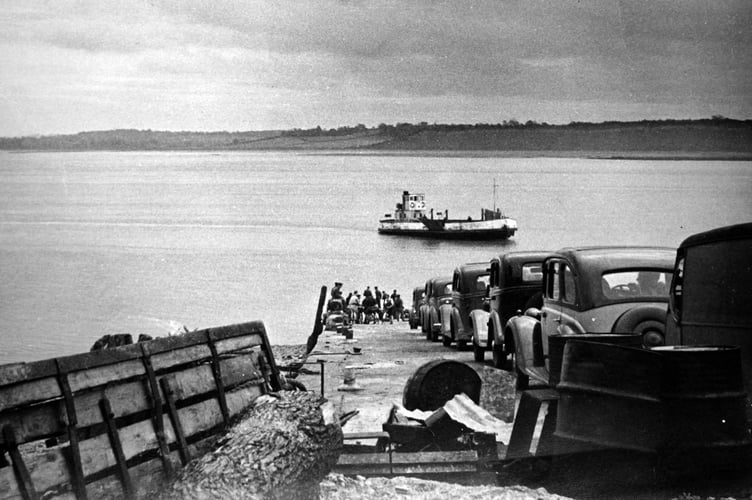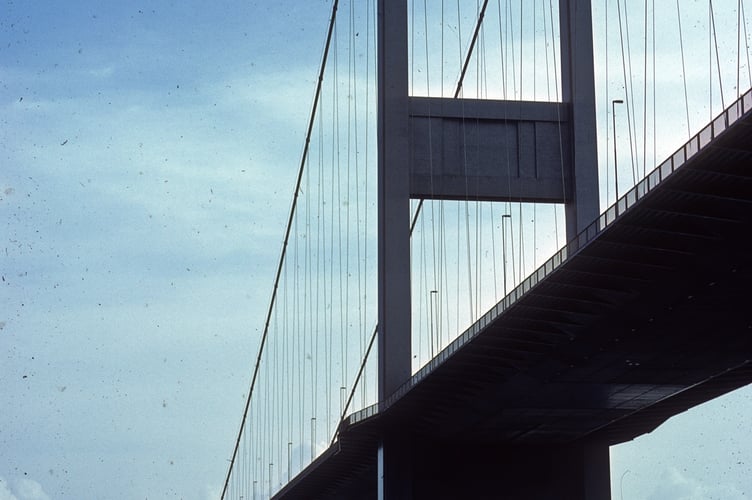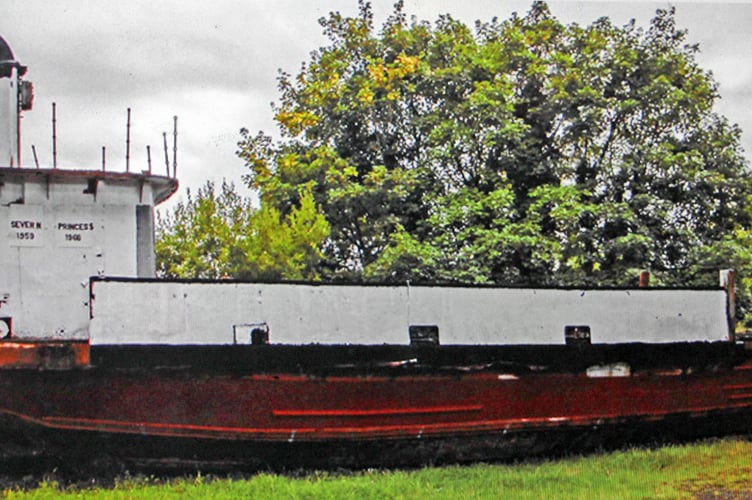I have very special childhood memories of leaving early in the morning with my parents, to ensure that we were at the front of the queue at Beachley to catch the first car ferry that would take us across the Severn to Aust. It was like a magical journey across a wide expanse of water into England, and if we failed to get a place on the ferry it would mean a tedious car journey of 55 miles, via Gloucester and this was a concern in both directions. Just to complicate matters, the crossings were also subject to wind, weather and tide conditions. The service was half hourly, with breaks due to high or low water, and the very high tidal range meant that the ferry could not operate at very low tide or very high tide.

It was the Romans who first worked a ferry crossing on this route, which is known as the ‘Old Passage’, and starting from Bath it linked Aust with Beachley, and known as the Via Julia Maritima it continued via Caerleon to Carmarthen. The crossing of the Severn is just one mile, but it can be very dangerous with the swift flowing tides and the second highest tidal range in the world, with a 40ft difference between low and high tide.
Aust is probably a contraction of the name Augustus, and it was this Emperor who established the Secunda Augusta Legion (Legio Augustus Secunda) which was responsible for the colonisation of South Wales.
An Aust ferry was in use by 1803 conveying letters brought by the Holyhead Mail coach to Chepstow three times a week and there were other mail coaches using the New Passage route from Black Rock.

In 1825 the Old Passage Ferry Association, sponsored by the Duke of Beaufort was formed, and the Company built piers on both banks of the Severn. They then commissioned a steam boat which began to operate in 1827 and also a second one two years later.
However, this dangerous crossing resulted in the Beachley Aust ferry being lost with all hands on September 1, 1839 and there were further problems on March 12, 1844. Soon afterwards the steam boats were scrapped and the service closed down.
A new service was opened in 1926 but it only lasted a few years. Then Enoch Williams, who was born in 1888 at Llansamlet near Swansea, formed the Old Passage Severn Ferry Corporation Ltd. In 1931. The first boat, specifically designed for the service was built at Chepstow. It was 60ft long, with a 20ft beam, and the wooden vessel named the ‘Princess Ida’ after Enoch’s wife, but it proved unsuitable and was withdrawn in 1935.
In 1934 the ‘Severn Queen’ launched as a car ferry that was able to carry 17 cars, and the first one to be taken aboard, as an experiment, was owned by Enoch Williams. This proved very successful, and in due course Enoch came up with the idea of installing a turntable which enabled 18 normal sized cars or 24 small cars to be carried.
The ‘Severn King’, built in Yorkshire, was able to transport passengers, bicycles and motorbikes, but not cars. It was 80ft long with a 30ft beam, and had a single screw powered by Crossley engines. It was followed by the twin screw ‘Severn Queen’ and the ‘Severn Princess’ which were both powered by two 150hp petrol engines.
The ‘Severn Princess’, built in Yorkshire in 1959, was slightly longer than the other two ferry boats, being 72ft by 28ft and powered by twin Leyland diesel engines which gave a better performance.
I have memories of my father being very nervous about driving off the concrete ramp onto the ferry, for there had been an incident involving a driver who managed to get it wrong and go into the water. Each car had to turn sharply off the ramp onto the ferry and then be turned on the manually operated turntable before being parked. This process was reversed for unloading. The turntable had a diameter of 18 feet and the cars on it were all pulled around by one man pulling on a rope. When they finished loading the cars, the bicycles and motorbikes were squeezed in between them.
Fares in the late 1950’s were 1s for adults, 6d for children, bicycles 2s, motorcycles 3s and motor cars ranged from 8s 6d to 12s 6d. Even gipsy caravans, complete with Romanies and horses were sometimes carried. Some of the most famous people to travel on the ferry include the Beatles and Bob Dylan in the 1960s. During its last year of full operation, with the three boats, over 5000,000 vehicles were carried across the Severn.
This ferry service was a vital link for people living in South Wales who wanted to cross the water into England, and using it always seemed a great adventure, for you had the feeling that you were going abroad to another country. This world famous ferry was closed on the 8th of September 1966, the day before the Severn Bridge opened.
Enoch Williams was paid over £160,000 in compensation, for the ‘Severn Princess’ was only seven years old, and the last boat to be used on the ferry service. It was of course a still valuable vessel, and was sold to a company in Galway, Ireland, where she provided a service to a fishery firm for some years, but was then abandoned and left to decay at her moorings.
In 1999 she was found abandoned by Dr Richard Jones, the grandson of Enoch Williams. The vessel was totally wrecked, and Galway County Council had placed a demolition order on it. ‘The Severn Princess Restoration Fund’ was founded, and the boat was purchased for the sum of one guinea (£1.05). After a temporary repair to the hull, it was towed back to South Wales, but it was a difficult operation which took five days, and the leaking boat nearly sank during this nightmare journey.

In 2003 the ‘Severn Princess’ was returned to Beachley and later moved to a spot on the west bank of the River Wye, beneath Isambard Kingdom Brunel’s railway bridge (built in 1852).
The ‘Severn Princess Restoration Trust’ was set up in 2014, and volunteers have been working hard to restore the vessel under the direction of their chairman Tim Ryan. However, at the time of writing, the trustees are very concerned that a number of flats are being built very close to where the ‘Severn Princess’ is sited. Sadly, the Princess has already been subjected to vandalism and theft of irreplaceable parts of the original structure. It is of enormous historical importance and this situation needs to be resolved.




